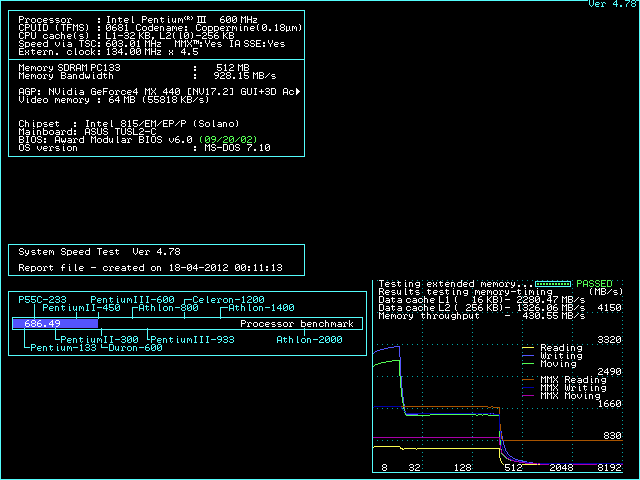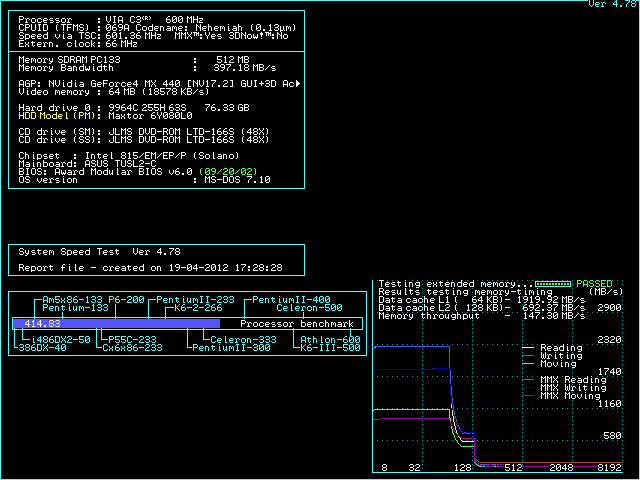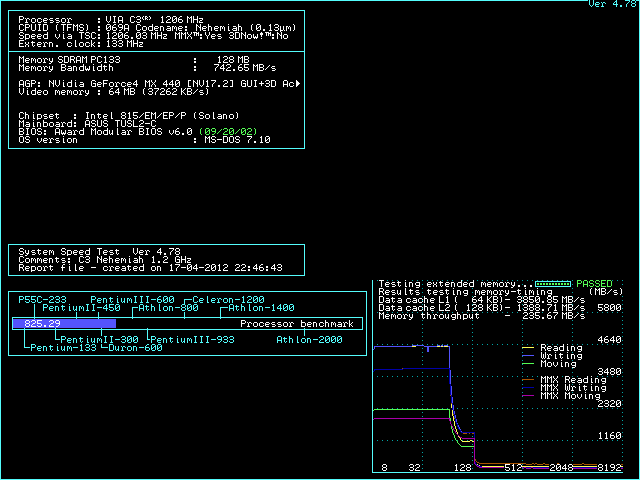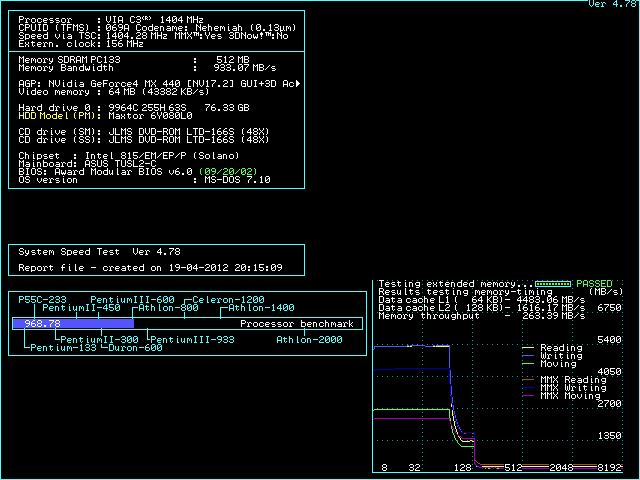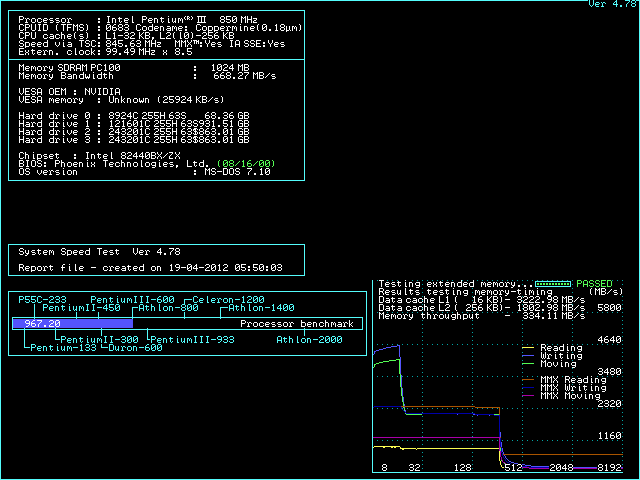First post, by sliderider
- Rank
- l33t++
wrote:wrote:There's a custom BIOS for TUSL2 (and CUSL2) at x86secret.com that eliminates the downtuning when overclocking. I use this on my TUSL2-C.
http://www.x86-secret.com/articles/tweak/i815twken.htmYour post here is quite timely. I just ran into this AGP 4X-to-2X issue when running some overclock tests on a VIA C3 Nehemiah 1.2 Ghz. Unfortunately, those tweaked BIOSes haven't been updated in quite awhile and ASUS came out with updated BIOSes after the latest tweaked BIOSes.
As a side note, the ASUS TUSL2 and TUSL2-C seem to run quite nicely with a VIA C3 Nehemiah. I have the system setup to tri-boot 98SE, W2K, and XP. For general web browsing, adobe flash video playback, and general video playback, I cannot detect any speed difference between the C3 1.2 GHz and a Tualatin-512KB 1.4GHz chip. However, I'm sure the benchmarks will pick up a difference.
If you were actually encoding audio/video instead of just playing it back you would see a difference. I seem to recall the C3 being weak in that area.
And I was right
http://www.tomshardware.com/reviews/VIA-s-C3- … -GHz,472-7.html
And in the business benchmarks it also falls short
http://www.tomshardware.com/reviews/VIA-s-C3- … -GHz,472-8.html
which is surprising since the C3 was marketed as a low power, low heat solution for businesses. You aren't saving anything with a chip that uses half the power but takes 4-5 times longer to do the work.
